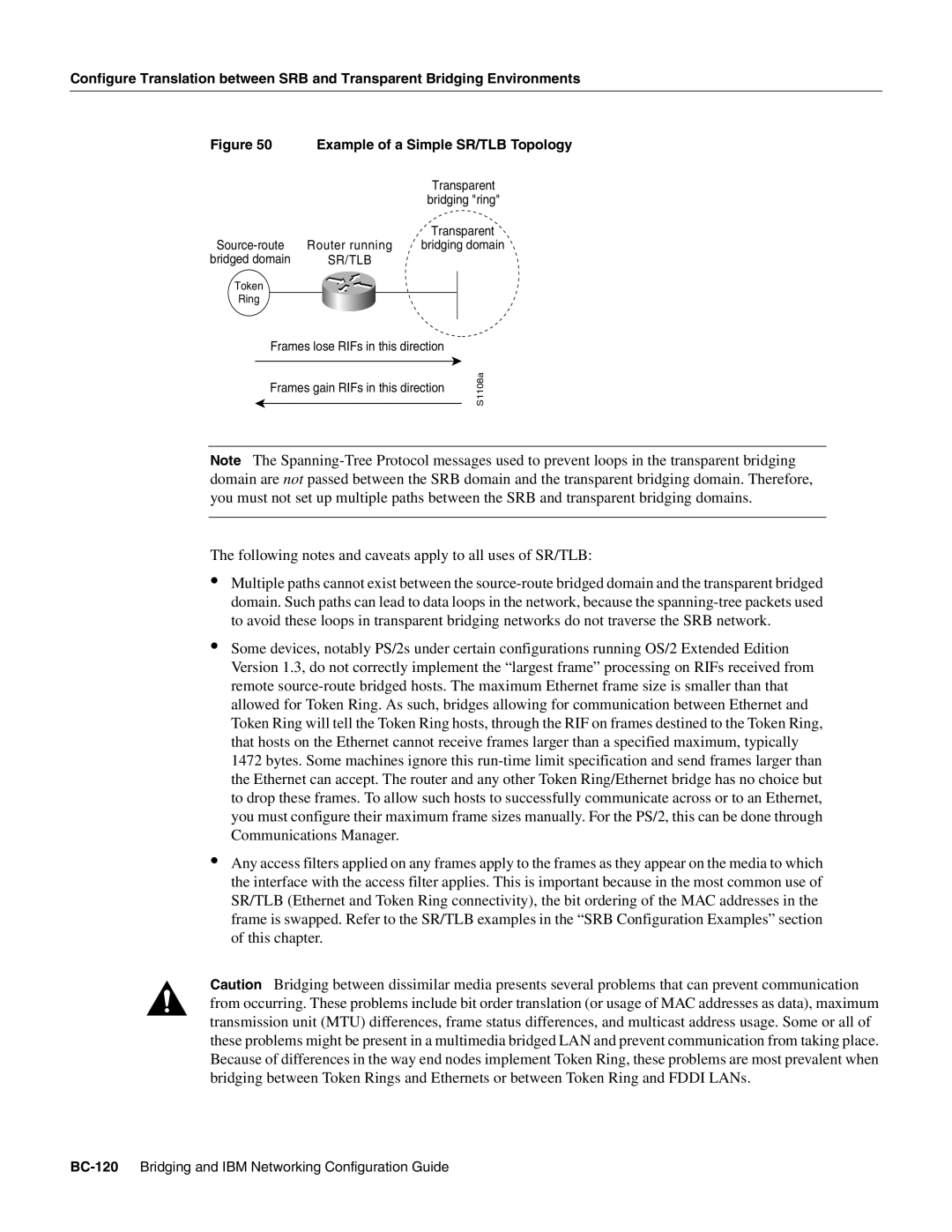
Configure Translation between SRB and Transparent Bridging Environments
Figure 50 Example of a Simple SR/TLB Topology
|
| Transparent |
|
| bridging "ring" |
|
| Transparent |
Router running | bridging domain | |
bridged domain | SR/TLB |
|
Token |
|
|
Ring |
|
|
Frames lose RIFs in this direction
Frames gain RIFs in this direction
S1108a
Note The
The following notes and caveats apply to all uses of SR/TLB:
•Multiple paths cannot exist between the
•Some devices, notably PS/2s under certain configurations running OS/2 Extended Edition Version 1.3, do not correctly implement the “largest frame” processing on RIFs received from remote
•Any access filters applied on any frames apply to the frames as they appear on the media to which the interface with the access filter applies. This is important because in the most common use of SR/TLB (Ethernet and Token Ring connectivity), the bit ordering of the MAC addresses in the frame is swapped. Refer to the SR/TLB examples in the “SRB Configuration Examples” section of this chapter.
Caution Bridging between dissimilar media presents several problems that can prevent communication from occurring. These problems include bit order translation (or usage of MAC addresses as data), maximum transmission unit (MTU) differences, frame status differences, and multicast address usage. Some or all of these problems might be present in a multimedia bridged LAN and prevent communication from taking place. Because of differences in the way end nodes implement Token Ring, these problems are most prevalent when bridging between Token Rings and Ethernets or between Token Ring and FDDI LANs.
